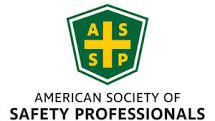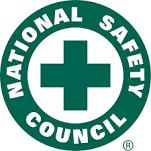How to Spot a Fake Insurance Certificate | FIRST, VERIFY
Collecting and making sure that Certificates of Insurance (COIs) are accurate and up-to-date is an enormous task, especially when you do not have tools to streamline this process. On top of this, checking to make sure you are not receiving fake insurance certificates is difficult.
Here are a few best practices to follow when checking the authenticity of a COI.
1. Look for “Acord 25”
The most common insurance certificate used by trustworthy insurance agencies is Acord 25.
A real Acord form will have the Acord logo in the upper right-hand corner and the text “Acord 25” in the bottom left-hand corner.
If the words “Acord 25” cannot be found in these places on the form, that is a red flag that this is not a legitimate insurance certificate.
2. Look for Consistent Handwriting & Font
Looking at the expiration dates on insurance certificates you receive is a good place to check for fraud. If the dates are not in the center of the box or if they are in a different font than the policy number, there is a good chance the COI is a fake.
Keep a lookout for anything handwritten or in a font that does not match the rest of your form. This is a good indicator of a fake insurance certificate.
3. Call the Insurance Company & Make Sure They are Legitimate
If you have a bad feeling about a COI, you receive, call the insurance company that issued it. If the company does not answer or if the agent you get in contact with does not want to talk to you or seems hesitant, this is a red flag.
If you do not recognize the insurance company listed in the upper right of the certificate, call your insurance agent to make sure they are a legitimate company.
AMBest.com is also a good place to check the status of an insurance company. Use their “ratings and analysis” section to look up the insurance company in question and see if they are legitimate.
4. Understand the Layout
The layout of COIs is complex, and somebody creating a fake likely will not know how to fill out the form.
Look for these sections in Acord 25 forms:
- General liability
- Worker’s compensation
- Automobile liability
These are common types of coverage you can expect to see on most forms.
If you see coverage like Cyber Liability, make sure this coverage is part of the insurance policy. If there is coverage listed in the COI that you cannot find in the insurance policy, the COI is probably a fake.
It is also important to look out for things like zeroes, N/A, or None listed when there is coverage not included in the policy that is present on the COI.
On an actual proof of insurance certificate, these boxes will be left blank to state the limit.
5. Make Sure the Insured Box is Filled Out Correctly
The name in the insured box on an insurance certificate should be the name of the business, not a person’s name. The business address should also be in the box.
It is important to check this section when looking for a fake COI because if an inexperienced person filled out the form, they will probably put their name in this section.
Another important reason to check this box is to make sure coverage is afforded in the case of a real insurance certificate. If the name in the box is not correct, coverage may not apply when a claim is made.
6. Look for the Right Contact Information
The contact information on an insurance certificate should be the information of the insurance agent or broker who issued the form. If this information is instead for the person who is covered by the certificate, they probably filled out the form on their own.
The signature at the bottom of the certificate should also match the name in the contact information box. Lastly, the email domain in the contact information should match the name of the Producer of the certificate, that is the name of the insurance company.
If any of this information seems off, do a quick search online to make sure the person who created the COI works for the Producer or call them to confirm.
If you are unsure of how to identify a fake COI and keep track of your contractor’s insurance policies, check out FIRST, VERIFY’s COI Management web application. Find out how we can help you reduce the risk associated with fake policies and increase compliance at all times.
You might also like






